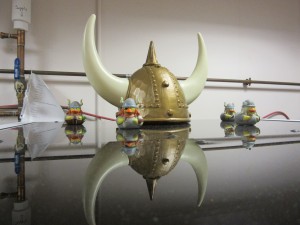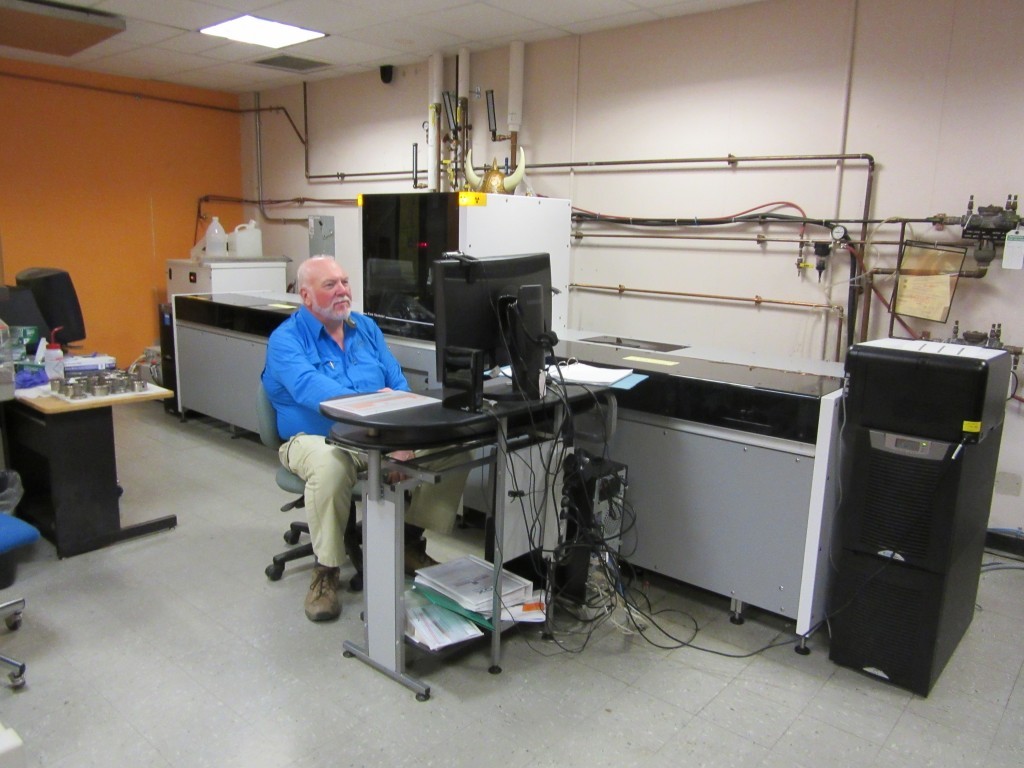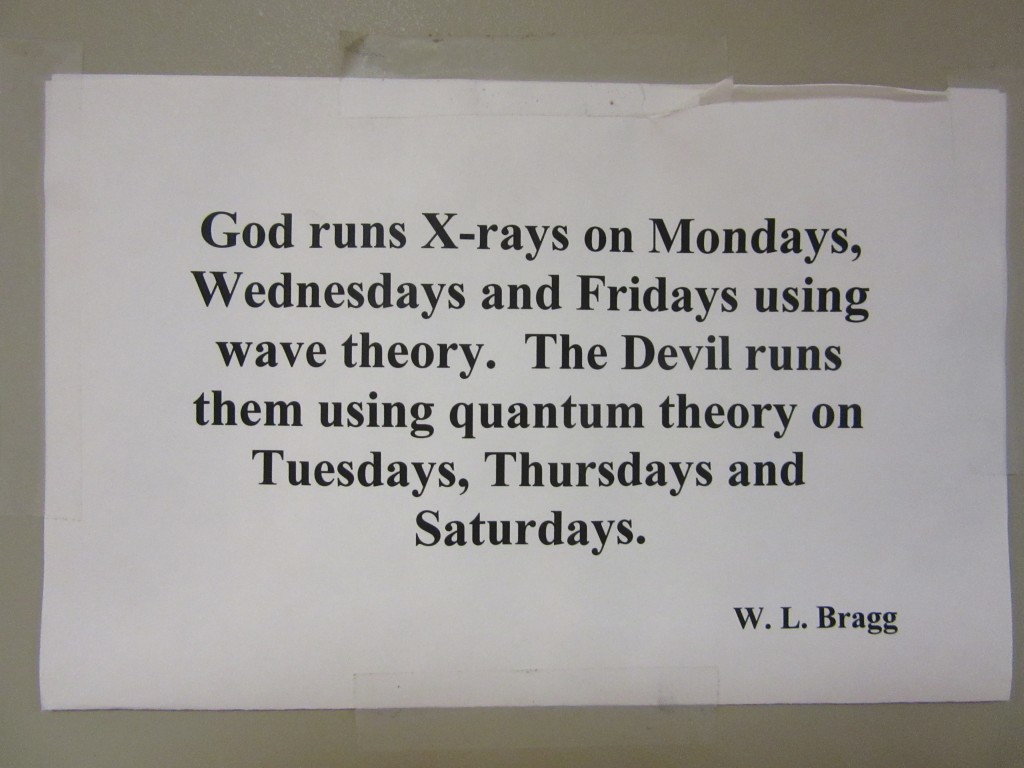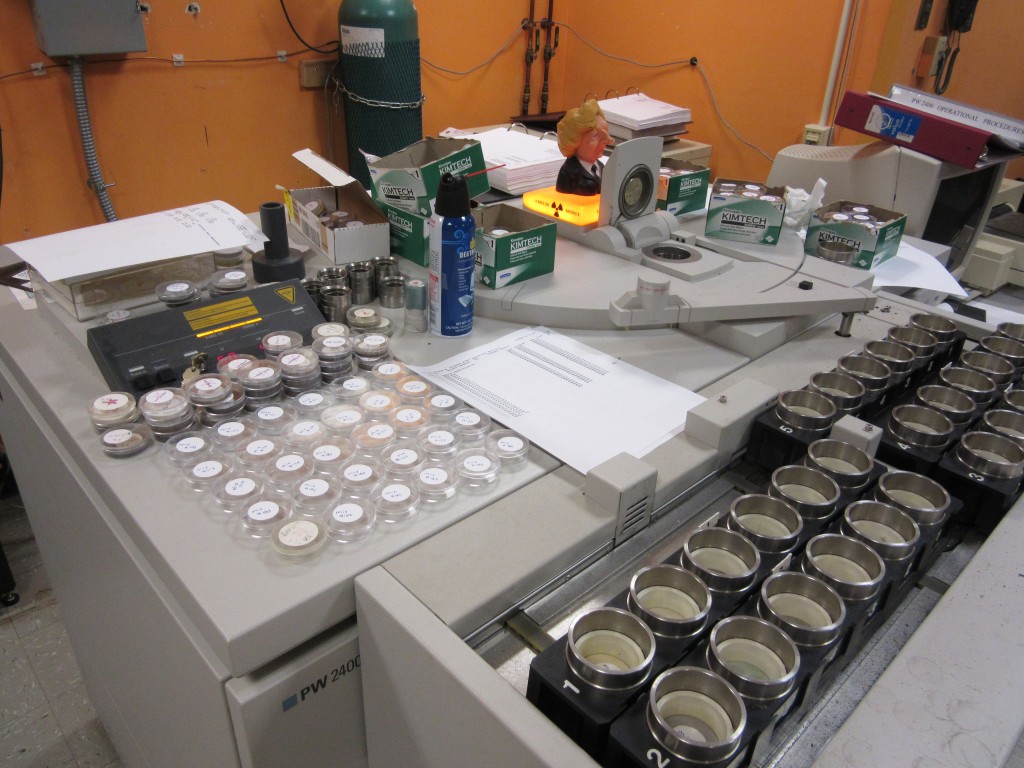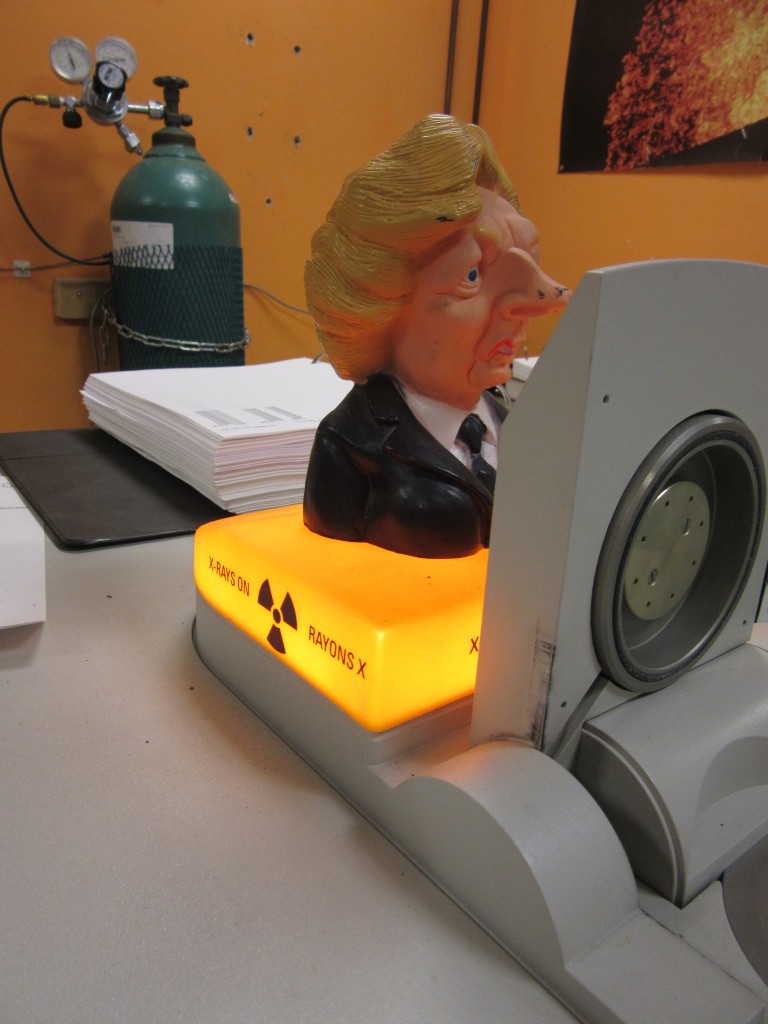Within the X-ray analytical facility we have three fully-automated X-ray spectrometers.
- Routine, high-quality major element analyses (Si, Ti, Al, Fe, Mn, Mg, Ca, Na, K, P) are obtained on fused La-bearing lithium borate glass disks using a Siemens MRS-400 multi-channel, simultaneous X-ray spectrometer. The analytical methods are modified from those of Norrish and Hutton (1969).
- Trace element data (Nb, Zr, Y, Sr, Rb, Th, Pb, Ga, Zn, Ni, Cr, V, Ba, Ce, La) are obtained using pressed powder pellets on a recently acquired Philips PW2400 sequential spectrometer. Intensities are corrected for non-linear background, inter-element interferences and variations in mass absorption coefficients, using methods modified from those of Norrish and Chappel (1967). Mass absorption coefficients for elements with shorter characteristic wavelengths than the Fe-absorption edge are estimated from the intensity of the Compton radiation of the Rh X-ray tube (Reynolds, 1967). Mass absorption coefficients of elements with longer characteristic radiation than the Fe-absorption edge are calculated from the Compton-derived mass absorption coefficients, after allowance is made for Fe and Ti intensities (Walker, 1973).
Supporting facilites include rock cutting, crushing and grinding equipment (diamond saws and corer, Spex shatterbox with an assortment of tungsten carbide and steel grinding vessels, boron carbide pestle and mortar), and complete laboratory facilities for sample preparation.
The analytical methods mentioned above have been used extensively for the analyses of lunar rocks, meteorites, and a wide range of terrestrial materials. These include basalts, granites, metamorphic rocks, soils, and even such weird things as corgaspinites (corundum-garnet-spinel rocks), nelsonites (apatite-magnetite rocks), dinosaur bones and coprolites!
Cox Analytical Systems Itrax XRF
Core scanner to produce optical RBG and micro-x-radiographic images, and magnetic susceptibility, as well as heavy and light elemental profiles in high resolution from centimeter to submillimeter scales. This instrument can be used to scan marine and lake cores for paleoclimate and other research interests. The Itrax scanner is housed in the XRF laboratory. The viking hat on top of the instrumentation ensures good luck and smiles as you collect your data.
